
Biology 2

Plant Kingdom: Flower Observation Lab
Background Information
Flowers are designed on
plants for sexual reproduction. They contain organs that produce gametes (sex
cells), which, after fertilization, lead to the formation of seed and fruit.
Anthers found in flowers produce pollen grains, which ultimately make sperm
nuclei and egg cells are produced in ovules found in the ovaries. The transfer
of pollen between flowers can occur by a variety of mechanisms including wind,
insects, birds, bats and even water. Consequently, flowers are constructed to
attract the appropriate pollinators or, as in the case of wind pollination, to
maximize the collection of pollen.
After successful pollination, seeds develop from ovules within the ovaries, which then mature into fruit (fruits contain seeds). In today’s lab we will study the structure of a basic flower as well the diversity of floral shape, color and size in flowering plants.
Floral Structure
Flowers are made up of four whorls of reproductive structures
borne on a fleshy platform called the receptacle. The outermost whorl is called
the calyx, which is constructed of one to several leaf-like structures called
sepals. The calyx is usually green, but may also be colored and difficult to
distinguish from the corolla. The corolla occurs just inside the calyx and is
made up of colored petals. The shape and color pattern of petals is often used
to attract animal pollinators. In wind and water pollinated flowers, flowers may
not have petals or they may be significantly reduced in size. Just inside the
corolla are the male reproductive structures, the stamens. Stamens are made up
of a long stalk-like structure called the filament and a sac-like anther which
produces pollen. The center of a flower is occupied by the pistil (composed of
one or more carpels). The pistil has a bulbous ovary at its base that contains
the ovules, a sticky stigma, which is a receptive platform for pollen and a
slender style that connects the ovary with the stigma. Pollen, once deposited on
the stigma, will germinate and produce a pollen tube that grows down through the
style towards the ovules within the ovary. When fertilized by pollen, ovules
develop into seed and stimulate the ovary into developing into fruit. Nectaries
may be found at the base of the flower often producing a small pool of sugary
nectar, which serves as a reward for animal pollinators.
See the diagram below showing the basic anatomy of a flower.
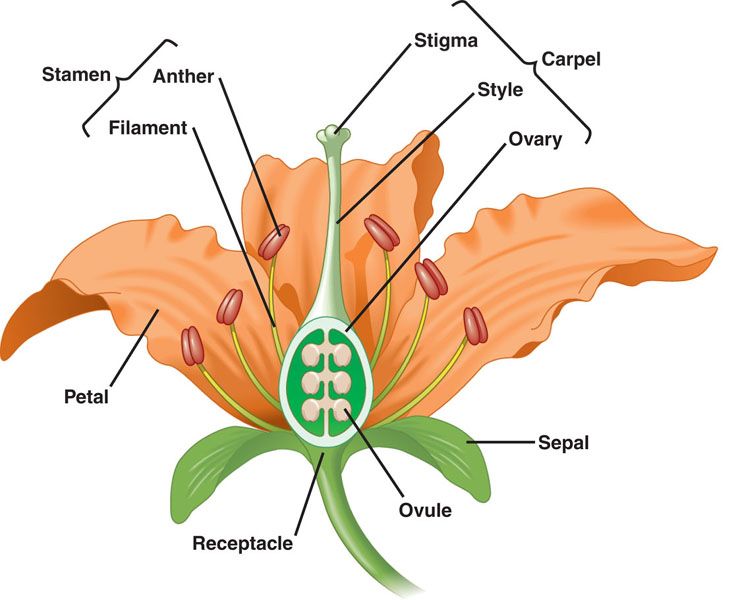
Floral Symmetry
Closely related plant species often share similar floral
characteristics. However, all plant species have unique flower structures that
do not vary significantly between individuals within the species. For this
reason, flowers and floral structures are commonly used in plant identification
keys. Although flower morphology within a species is a very conservative trait,
the diversity of flower size and shape can vary tremendously between plant
species.
For example floral symmetry can be quite different between
species. Flowers with regular symmetry that have morphologically similar petals
that radiate out from the flower’s center are said to be actinomorphic.
Flowers that exhibit bi-lateral symmetry are said to by
zygomorphic and in contrast to actinomorphic flowers, have individual petals
that may have very different shapes.
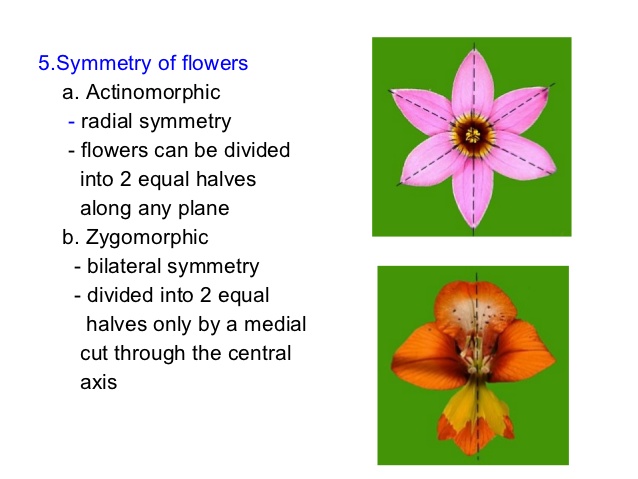
Inflorescence Types
Solitary flowers can be produced at the terminal end of a branch or in a leaf axil. This condition is relatively rare, however, and most plants produce flowers in groups on flowering branches called inflorescences. If the first flower to open and mature is at the top of the inflorescence it is said to be a determinant inflorescence. If the first flower to open is at the bottom of the inflorescence it is said to be indeterminate.
The diagram below illustrates different determinant and indeterminate inflorescence types.
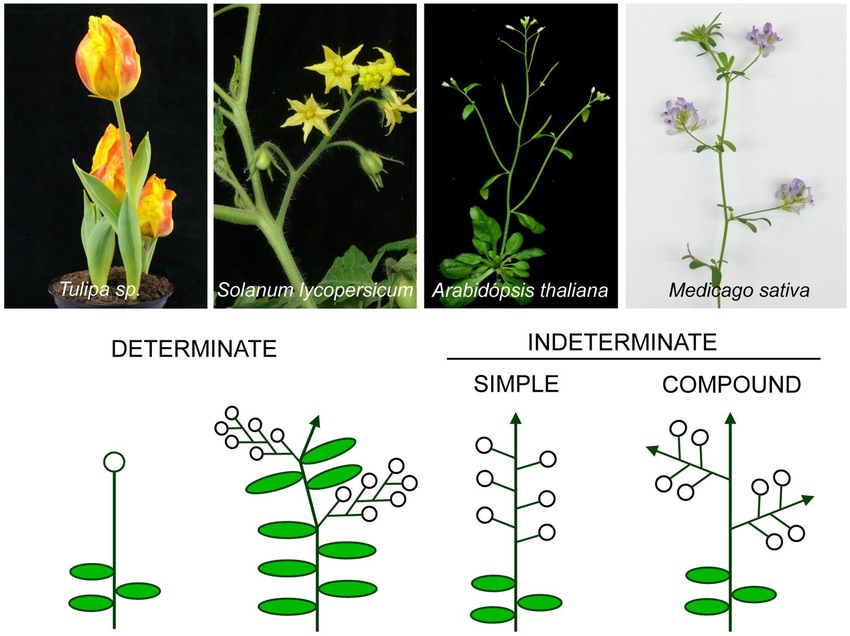
Use the diagrams that are posted on the Inflorescence Types Notes found on the Plank Kingdom Links located on the Biology 2 Homepage to learn more about floral inflorescence. Click HERE for a quick look at these diagrams.
Corolla Shapes
The corolla is the secondary accessory floral whorl consisting of the petals. The petals of the corolla are usually variously colored and delicate of nature. They may be free (polypetalous) or united (gamopetalous). The primary function of the corolla is to attract insects for pollination and also serves to protect the essential organs.
Petals are usually accompanied by another set of special leaf-like structures called sepals, that collectively form the calyx and lie just beneath the corolla. The calyx and corolla together make up the perianth. When the petals and sepals of the flower are difficult to distinguish (hard to tell which ones are the petals and which are the sepals because they look alike) they are collectively called tepals. Examples of plants in which the term tepal is appropriate are the lilies and the tulip families. The sepals have the same coloring as the petals. The only way to distinguish them is to fold the flower together again like a bud, and see which of the whorls are on the outside and which of the whorls are on the inside. Outside whorls are the sepals, and the inside whorls are the petals.
Click HERE to learn more about the corolla shapes.
Virtual Lab Instructions
Flower Dissection (Virtual)
1. View the following video to see how the flower is dissected and the parts that are identified.
2. After viewing the video, see if you can identify the parts of the flower shown below. It is a tiger lily plant.
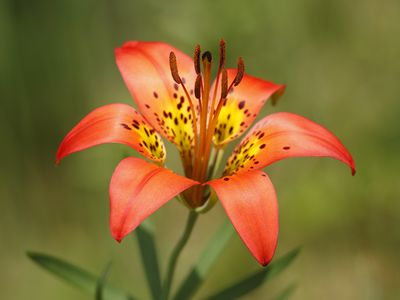
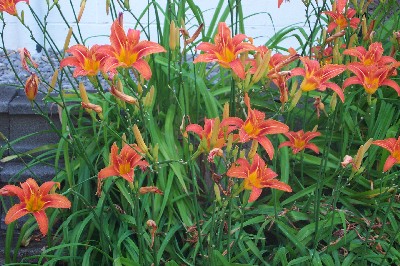
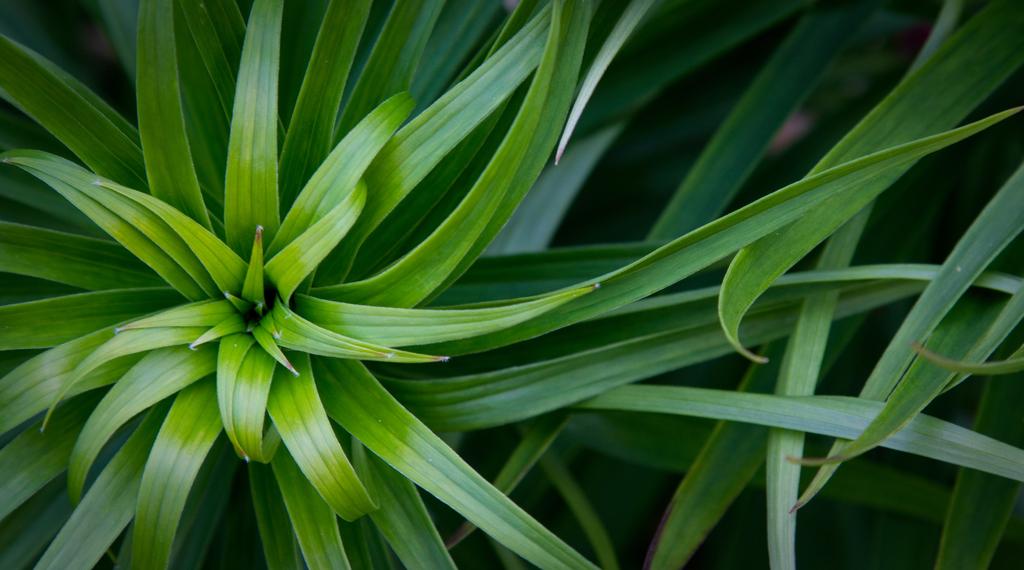
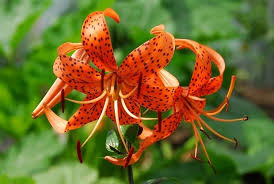
Assignment
1. Complete the Angiosperm Virtual Flower Lab on JupiterEd. Check the Biology 2 Website for the due date for this assignment.